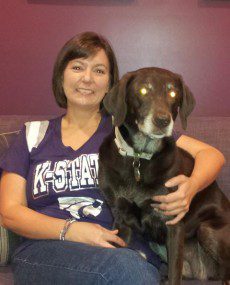This is a reprint of one my favorite blog posts! Exercise is good for our pets for so many reasons. We can strengthen the human-animal bond, curb negative behaviors associated with boredom, and keep strong muscles with healthy joints. I hope you enjoy.
Wow, what a strange summer we had. It seems that we had days that were too hot for playing in the sprinkler or going to the pool, then some gorgeous perfect weather days. Those hot ones were definitely not the the kind for an evening stroll with your dog. For those of you who got up early and stayed up late to take your pet on their walk, I commend you. I certainly wasn’t in that group.
What are some other reasons people don’t take their dog out for a walk?
- Not enough time
- Too tired after work
- Pet has a fenced yard
- Can’t control pet on leash
- Pet can’t walk very far
With every season we make renewed commitments to ourselves about weight loss, nutrition, organization, and so many other things. Let me help you with two of those. Let’s talk about getting your pet fit and getting you outdoors.
If you’ve read my earlier posts, you’ve heard about Molly, our 10 1/2 year old Labrador with arthritis and healed right elbow (humeral) fracture. She has a limp and the waddle that accompanies moderate hip dysplasia. When we get lazy about her walks, it does affect her overall health. We noticed in 2012 as fall came that Molly was more uncomfortable with moderate exercise.
The Regehr family decided that we had to resume Molly’s exercise regimen and fit that into the schedule before the kids bed time. We did this right before or right after our dinner, right about sunset. We are followed the plan below for early senior dogs. This is the time of day that works for us. You may be an early riser and want to do this first thing in the morning. Let’s go over a fitness plan that might work for you and your dog.
Disclaimer: I am well aware that I am not a people trainer or human physician! So, please consult your physician before starting an exercise program. I am making recommendations for your pet assuming that your level of fitness exceeds what I suggest for your dog.
Young to early senior dogs:
First, don’t start with a marathon or a sprint. If your dog has been a couch potato, you don’t need commit much time to getting them moving. For young to early senior dogs with no physical ailments start with 10-15 minutes once daily, 4-5 days a week. Don’t take a 1 hour weekend walk to make up for it. This is like you going hiking for the afternoon after playing Playstation all week.
Continue the 10-15 minute walk for 1-2 weeks. Then each week add 5 minutes until you are up to 30 minutes per day. Thirty minutes per day, five days per week is the minimum recommendation for weight loss or maintenance exercise. After you’ve stayed committed to this schedule for 3 months, you could work on increasing to 35, 40 then 45 minutes over three weeks.
If you are loving this outdoor time and want your pet to accompany you on a run or longer duration walks, please talk with us about proper nutrition (Hill’s j/d) and joint supplementation (Dasuquin and fatty acids) to help protect your dog from cartilage damage and osteoarthritis pain.
Geriatrics and dogs with osteoarthritis or other joint health issues:
If your pet is older or a little frail start by counting houses. Leave home and walk the distance of 1-2 houses and return home. Do this for two full weeks. Then each week add one house. You’d be amazed at how these walks start to strengthen muscles quickly and increase your pet’s overall comfort.
Sometimes dogs on this regimen max out around 15-20 minutes. If they do, don’t give up. Take a second walk during the day, starting over with one house at a time. The two walk regimen can be really beneficial for muscle strengthening and ultimately having your pet exercising up to 40 minutes/day. If your pet does not recover quickly from these walks or seems more uncomfortable afterwards, we need to discuss pain management and nutrition.
This is four legged fitness made simple. Pick the protocol that best suits your pet’s needs. If you have both a youngster and a geriatric, start with the “walking houses” plan and then return your older pet home, heading back out for the rest of the walk with your youngster.
If you have any questions about fitness please contact Perimeter Veterinary Center at 913-742-8387.



Leave a Reply
You must be logged in to post a comment.